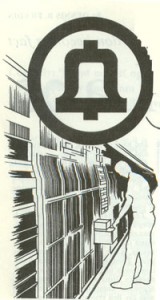 From A Brief History of Lucent Technologies
From A Brief History of Lucent Technologies
On Feb. 14, 1876 Elisha Gray lost his race to invent the telephone; Alexander Graham Bell put in a patent application just hours before Gray filed one.
Gray, however, had already left his mark on telephony seven years before when, in 1869, he and Enos N. Barton formed Gray and Barton, a small manufacturing firm based in Cleveland, Ohio. Three years later, the then Chicago-based firm was renamed the Western Electric Manufacturing Company. By 1880, it was the largest electrical manufacturing company in the United States, noted for its production of a variety of electrical equipment, including the world’s first commercial typewriters, telegraph equipment and Thomas A. Edison’s electric pen.
A year later in 1881, when the growth of the telephone network was outstripping the capacity of smaller suppliers, American Bell purchased a controlling interest in Western Electric and made it the exclusive developer and manufacturer of equipment for the Bell telephone companies.
In 1907, Theodore N. Vail combined the AT&T (formerly American Bell) and Western Electric engineering departments into a single organization that, in 1925, would become Bell Telephone Laboratories.
In the course of its ongoing research, Bell Telephone Laboratories made several discoveries that would touch the lives of millions in years to come. For example, Bell Labs developed the first commercially viable system for adding sound to motion pictures. Combined with studio and theater equipment manufactured by Western Electric, this system moved Hollywood quickly from silence to sound. The first demonstration of television in the United States in April 1927 was another notable first for Bell Labs.
Ten years later, in one of its most memorable moments, Dr. Clinton J. Davisson became the first of 11 Nobel Prize winners from Bell Laboratories for his experimental confirmation of the wave nature of electrons.
After playing a critical role in providing communications and command equipment for the U.S. military during World War II, Western Electric was able to direct its efforts toward filling the pent-up demand for telephones. In 1946, it produced a record 4 million telephones. Bell Labs directed its research in new areas as well. Three of its scientists received the Nobel Prize for their invention of the transistor in 1947. Bell Labs moved on from there to develop distinguished “firsts” in communications that include the laser, Telstar satellites, electronic switching, UNIX operating system, and packet data switching.

